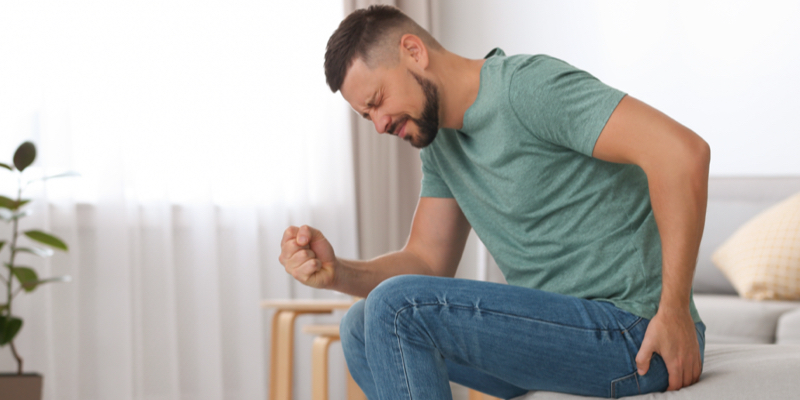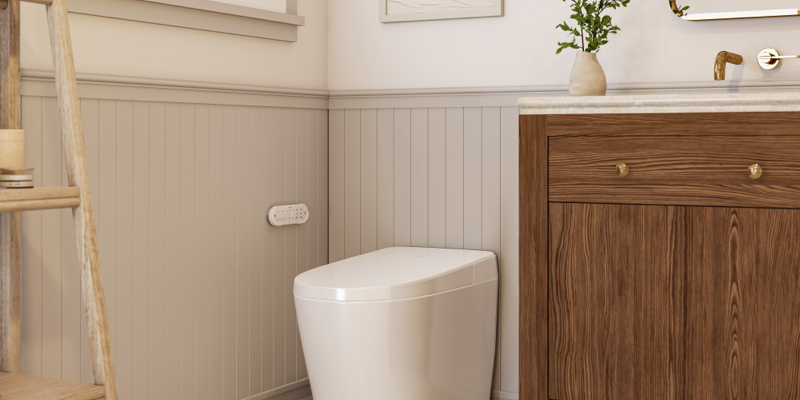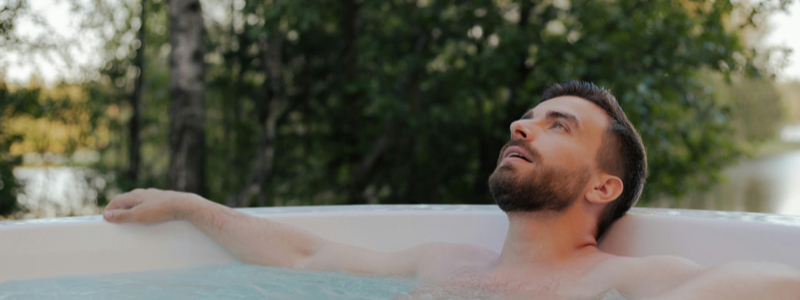
- Bidets use water to clean sensitive areas without added irritation, offering a soothing alternative to toilet paper. This may help reduce discomfort associated with hemorrhoids.
- Most bidets offer adjustable water pressure and temperature, and can mimic the benefits of sitz baths, improving comfort during flare-ups.
- Electronic bidet toilet seats offer advanced features like warm air drying and heated toilet seats. Some non-electric modes can deliver warm water washes when connected to a warm water supply line, typically found beneath the bathroom sink.
Going to the bathroom shouldn’t be uncomfortable or painful—but that’s the story for those with hemorrhoids. With symptoms like irritation and bleeding, they’re a literal pain in the you-know-where.
If wiping extra-sensitive areas with toilet paper seems like a nightmare, bidet washing can help provide more relief, all while benefiting the planet by using less toilet paper. Water is much gentler on the skin—which means less likelihood of making hemorrhoids symptoms worse.
How do you get hemorrhoids?
Hemorrhoids can form from pressure in the veins of the rectum or anus area, and is often caused by straining from constipation, pregnancy, and heavy lifting.
Hemorrhoids aren’t dangerous to your health and can go away with the help of at-home remedies, but they also cause a lot of discomfort and pain.
There are three different types of hemorrhoids, each with varying symptoms:
- Internal hemorrhoids form inside the rectum. They’re usually painless, though bleeding can happen during bowel movements.
- External hemorrhoids form outside the body, under the skin in the anus. Symptoms usually include mild pain, itching, swelling, and bleeding.
- Thrombosed hemorrhoids form when external hemorrhoids develop blood clots, and can be very painful.

How can bidets help with hemorrhoids?
Bidets use water to provide a gentle wash during bathroom visits, which can be better than wiping when dealing with hemorrhoids.
Toilet paper can be rough on skin and ineffective when it comes to personal hygiene. This isn’t ideal for hemorrhoids and can make symptoms and irritation worse. In contrast, there’s no rubbing or wiping needed with a bidet—and because they use water, bidets can be much cleaner and gentler on the skin.
What should you look for in a bidet?
The most important bidet features to look out for when treating for hemorrhoids are adjustable water pressure and temperature. When using a bidet to help manage symptoms of hemorrhoids, water pressure should be low and gentle to avoid causing additional discomfort.
Bidets with warm water may provide some of the same benefits as soaking in a bathtub or sitz bath. Sitz baths are removable basins filled with warm water, and many experts recommend them for treating hemorrhoids.

Using a bidet to wash with warm water can potentially help soothe symptoms like itching and soreness while improving blood flow. Not all bidets have warm water, but here are a few types that do.
Electronic bidet toilet seats.
Bidet toilet seats are what they sound like: toilet seats with a bidet built in. They need electricity to function, but that also allows them to have advanced features, like an internal water heater and customizable wash settings. Some models are built with warm air dryers that provide a gentle air-dry cycle, which means less wiping needed after your wash.
Non-electric bidet toilet seats and warm water bidet attachments.
If there isn’t an electrical outlet close to the toilet, there are non-electric bidets that are good for helping to manage the symptoms of hemorrhoids. These include bidet toilet seats and bidet attachments that attach between the toilet seat and bowl.
Non-electric bidets may not have all of the add-ons that come with electronic models, but they can still provide warm water washes by connecting to a nearby hot water line from a bathroom sink. They’re also set up for temperature and pressure control to help soothe discomfort.
Can bidets heal hemorrhoids?
Bidets can help relieve the symptoms of hemorrhoids—but they aren’t a fool-proof cure. Lifestyle changes can help avoid getting hemorrhoids in the first place, including getting enough fiber, staying hydrated, and exercising. But for those experiencing hemorrhoids, bidets can be an effective and comforting part of a treatment plan.
